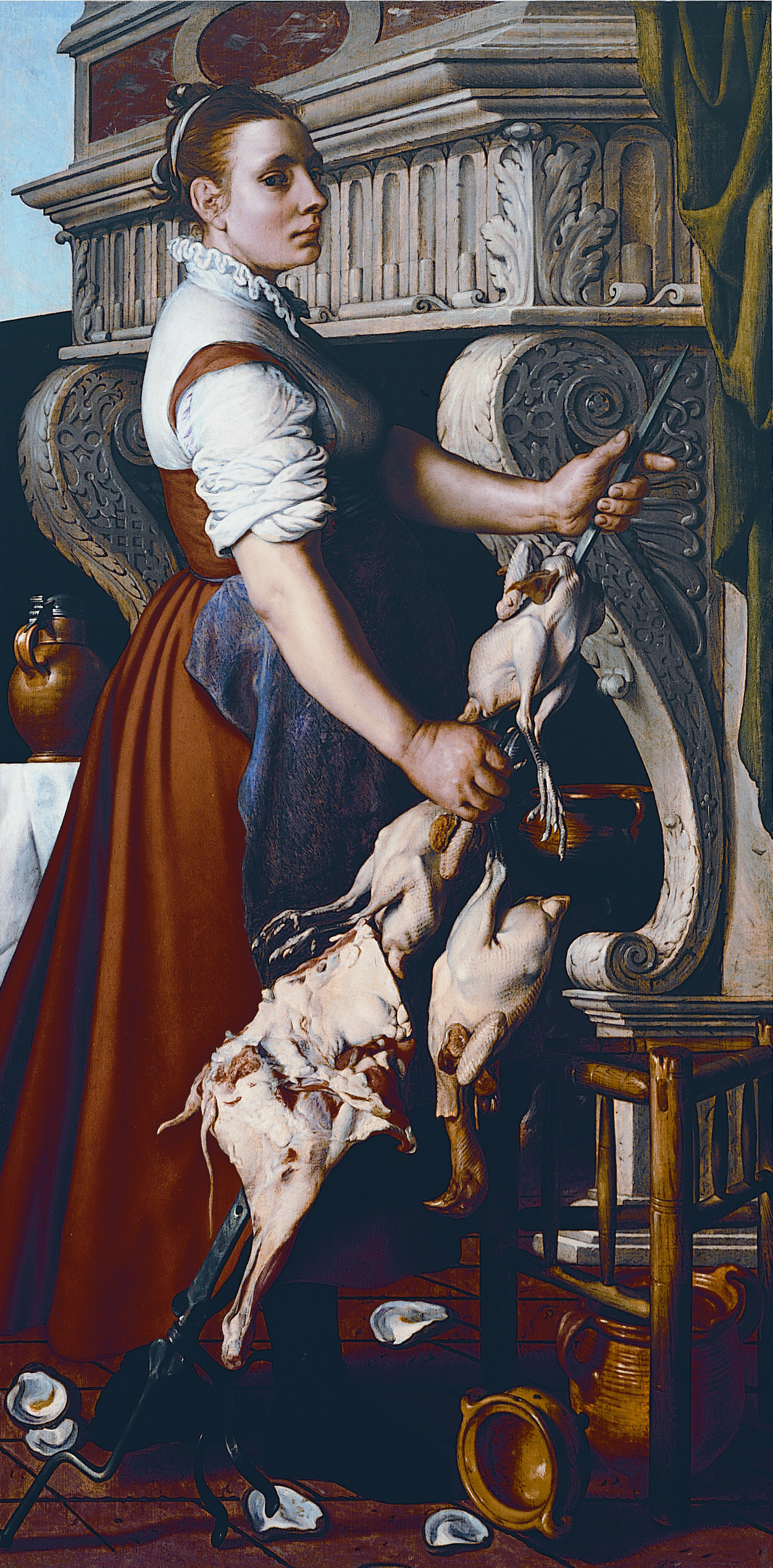
Click here to view image
La cuoca
Banca Popolare 1899 Genova - acquisto
Aertsen, Pieter
PB 181
Unità di misura: cm; Altezza: 171; Larghezza: 85
olio su tavola di rovere
Certainly one of the best-known works of the Strada Nuova Museums and of seventeenth-century Genoese painting itself, this canvas, internationally known as Strozzi's “The Cook,” rather depicts a scullery maid intent on plucking a goose among chickens and pigeons, with a turkey hanging behind her, in the kitchen of a seventeenth-century Genoese aristocratic residence. In fact, among local aristocratic families, the profession of cook was at that time reserved exclusively for men, while women could only take care of more menial tasks, such as precisely plucking poultry. It is certain that this is an aristocratic dwelling, given the presence in the foreground of a rich, embossed silver tinplate with an elaborate handle depicting a female herm. The painting is first mentioned in the 1683-84 inventory of Gio. Francesco I Brignole Sale, commissioner of the Palazzo Rosso mansion; from the second decade of the eighteenth century, however, and at least until 1774, the work is always remembered-in inventories and guidebooks-in the family villa on the Albaro hill (today's Marcelline Institute): it is very likely that this less prestigious location was motivated by the painting's immediate everyday subject matter, which was probably judged not to be in keeping with the decorum of the city palace, whose picture gallery had been enriched in the late seventeenth and early eighteenth centuries with canvases of historical subjects or sacred iconography. The work of Strozzi - referred to in documents of the time as 'the Capuchin' because he entered the Order as a friar at the age of seventeen - is an admirable synthesis of the various influences that made up the fabric of local painting in the early decades of the seventeenth century: on the one hand, the Flemish fashion for depictions of 'kitchens,' 'markets,' and 'pantries,' which had found examples as early as the mid-sixteenth century in paintings by painters such as Aertsen and Beuckelaer, documented in the collections of Genoese families (two plates by these artists are now in Palazzo Bianco); on the other, the new attention to the genre of 'still life', due to the presence in the city of painters, still coming from Flanders, such as Jan Roos or Giacomo Liegi; finally, the first establishment of that naturalism of Caravaggio's matrix that constituted the other pole of updating of the local school. This canvas, datable to c. 1625, exemplifies the painter's best qualities: textural brushwork, “tasty and suave...manipolar of tints,” “mellow and robust coloring,” as the sources write. From the iconographic point of view, the desire to measure himself with the representation of popular subjects is clear, showing an adherence to reality still unknown to Genoese painters, and singular if one considers this choice by a religious man; it is not excluded, however, that beyond this immediate meaning there may be other symbolic contents concealed in the painting, perhaps-as has been proposed-an allegory of the four elements, to which the birds, for “air,” the elaborate tinner, for “water,” the 'cook,' for “earth,” and “fire,” which the painter paints with great skill in its crackling under the cauldron, would allude. Boccardo (La cucina italiana. Cuoche a confronto, 2015) speculates that the commissioner of the work had been Gio. Carlo Doria in late 1625; when the commissioner died that same year, the canvas would later enter the Brignole-Sale collections.



